#marine atlantic
Explore tagged Tumblr posts
Text

you're beautiful both inside and outside
inst:wheresmaggot
#artwork#art#digital illustration#digital art#illustration#digital painting#artists on tumblr#animals#whale#whale art#marine creatures#marine life#oceancore#ocean#atlantic ocean
7K notes
·
View notes
Text
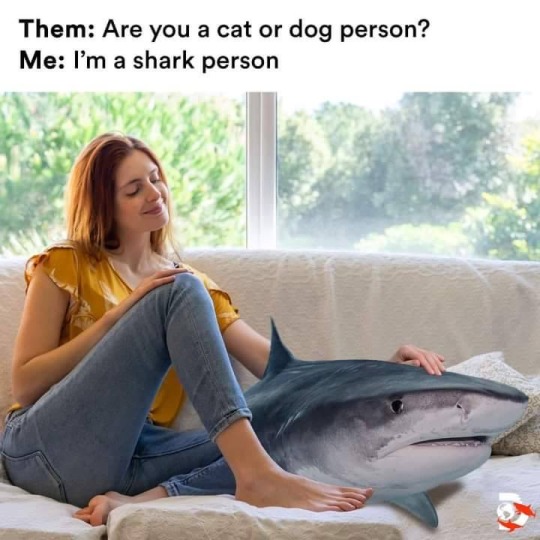
literally!!
#sharks#marine animals#marine biology#shark#atlantic ocean#pacific ocean#ocean#shark post#shark memes#lemon shark#epaulette shark#hammerhead shark#blacktip reef shark#great white shark#whale shark#chilling pic moments before 14ft great white shark mauled surfer shows haunting clue beast is about to pounce#shark thoughts
11K notes
·
View notes
Link
[NL] Premier Andrew Furey is calling on the [Canadian] federal government to reverse the Marine Atlantic rate increase, and says the entire cost-recovery system for the vital link needs to be overhauled.
Furey says the increase in the fuel surcharge from 13 to 17 per cent is punitive to the people of Newfoundland and Labrador, and the tourists who come here.
He raised the matter with federal Transport Minister Omar Alghabra last week.
#Marine Atlantic#fuel#surcharge#charge anag.#Newfoundland and Labrador#Canada#news#via VOCM#world news
0 notes
Text
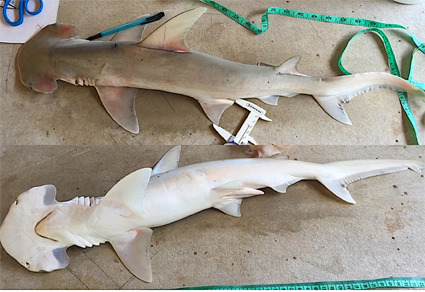
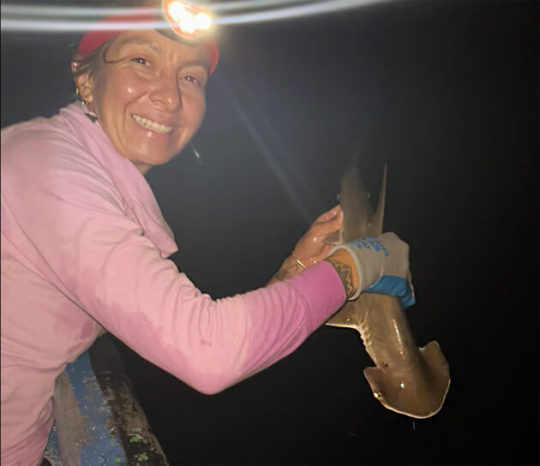
NEW HAMMERHEAD SHARK JUST DROPPED
Not every day does a new shark get discovered! Meet the Shovelbill Shark (Sphyrna alleni), a newly described species of hammerhead shark named after Microsoft co-founder and philanthropist Paul Allen. This new species is found in the coastal waters of the Caribbean and southwest Atlantic.
Hammerhead sharks are easily recognized by their laterally expanded and dorsoventrally compressed heads. Genetic studies have revealed that what was once thought to be a single bonnethead species (Sphyrna tiburo) is actually a complex, with Sphyrna alleni now recognized as a separate species. A longtime advocate for wildlife conservation, Paul Allen and his Paul G. Allen Family Foundation supported Global FinPrint, an international survey of the world’s reef sharks and rays. It was during this project that scientists conducted much of the fieldwork necessary to describe this newly recognized species. The Shovelbill Shark is smaller than the bonnethead, with distinct genetic and morphological characteristics, including a different number of vertebrae, which suggest it is separate from other hammerhead species. This new species is distributed from Belize to Southern Brazil, inhabiting estuaries, coral reefs, sandy and muddy bottom beds, seagrasses, and mangroves.

The Shovelbill Shark is a common component of artisanal fisheries in many Latin American countries and currently lacks proper management or protection. Previous reports indicate that this new species is undergoing overexploitation, making it imperative to safeguard their populations and establish fisheries regulations.
Photographs: Above is a male shovelhead shark (Sphyrna alleni), described from the Caribbean and the Southwest Atlantic. Below is Cindy Gonzalez, the lead researcher of the study, tagging the new species Sphyrna alleni (photo courtesy of the Mays Family Foundation).
Reference: Gonzales et al., 2024. Sphyrna alleni sp. nov., a new hammerhead shark (Carcharhiniformes, Sphyrnidae) from the Caribbean and the Southwest Atlantic. Zootaxa.
639 notes
·
View notes
Text

shark truce
#pacific horned shark#atlantic horned shark#chomp the shark#bruce the shark#marine biology#fishblr#aquablr
1K notes
·
View notes
Text

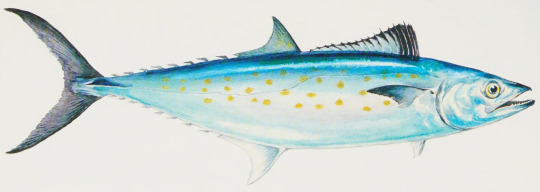
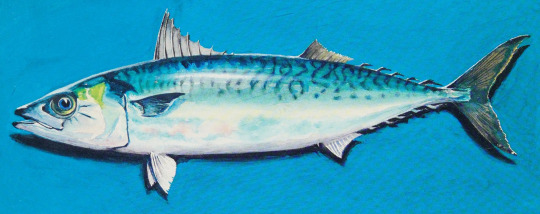
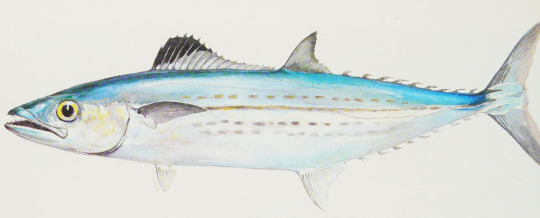
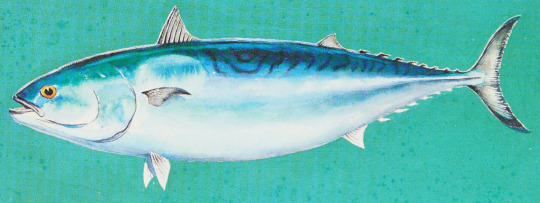
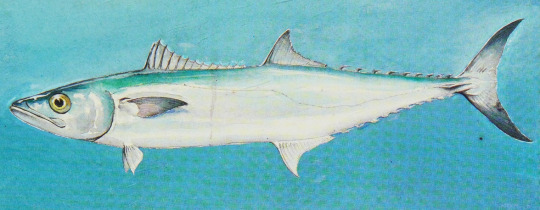
An Artist's Catch: Watercolors by Frank Stick (1884-1966). Edited by David Stick. Published in 1981.
Internet Archive
1.) Atlantic mackerel (Scomber scombrus)
2.) Atlantic Spanish mackerel (Scomberomorus maculatus)
3.) Chub mackerel (Scomber japonicus)
4.) Cero mackerel (Scomberomorus regalis)
5.) Frigate tuna (Auxis thazard)
6.) King mackerel (Scomberomorus cavalla)
#marine life#fish#bony fish#mackerel#atlantic mackerel#atlantic spanish mackerel#chub mackerel#cero mackerel#king mackerel#tunas#frigate tuna#Frank Stick
1K notes
·
View notes
Text
"GNN has reported several times over the last three years about large baleen whales returning to waters in which they haven’t been sighted for decades.
Now again, news from Argentina shows that the benefits of the 1946 International Convention for the Regulation of Whaling are still compounding, with sei whales returning to the South American nation’s coastal waters for the first time in nearly a [century].
Overhunting during the 1920s and 1930s led these massive blue-grey giants to abandon their ancestral waters in Argentina.
“After nearly a century of being hunted to near extinction, sei whale populations are now bouncing back and returning to their former habitats,” said Mariano Coscarella, a biologist and marine ecosystem researcher at Argentina’s CONICET scientific agency, who added that the whales “reproduce every two or three years, so it nearly took 100 years for their population to reach a level where people could notice their presence.”
The third largest whale in the world, the sei can grow up to 64 feet (20 meters) in length and weigh up to 31 tons (28 tonnes). It’s also among the fastest whales in the world, and is certainly the fastest for its size group. It can swim 31 mph over short distances.
Despite being recognized on the IUCN Red List as Endangered, there are estimated to be 50,000 sei whales in a global population that is trending up.
Apart from sei whales and Argentina, a recent survey in the Seychelles sighted 10 groups of at least a few blue whales, the first such observations since 1966.
Back in March, a New England Aquarium aerial survey team sighted a gray whale off the New England coast last week, a species that has been extinct in the Atlantic for more than 200 years.
The largest animal on Earth, the blue whale, is returning to coastal Californian waters in numbers not seen since before the whaling industry, GNN reported in 2023 based on a 2014 survey.
And down in Antarctica, where many different whale species come to feed and breed, recent surveys have found the Southern Ocean is once again becoming a Sarengetti for whales, with an estimated 8,000 Southern fin whales found between 2018 and 2019."
-via Good News Network, May 16, 2024
#whales#whale#blue whale#gray whale#sei whale#fin whale#cetacean#marine mammals#oceans#conservation#conservation news#marine science#marine biology#climate news#climate hope#good news#hope#california#new england#antarctica#argentina#atlantic ocean#endangered species
548 notes
·
View notes
Text

yeah
#has someone already done this#atlantic mackerel#fishposting#marine biology shitpost#marine biology memes#marine biology#marine memes#wizardshitposts
630 notes
·
View notes
Text



Pucker Up for the Sea Lamprey!
The sea lamprey (Petromyzon marinus), also known as the vampire fish, is the most famous member of the order of lampreys, Petromyzontiformes. Despite their similar appearance to eels, lampreys are actually jawless fish, and are more closely related to hagfish than eels. To add further confusion, sea lampreys actually reproduce in freshwater rivers and streams, and are only found in the ocean as adults. They are spread along the Atlantic coasts of North America and Europe, as well as the Mediterranean and Black Sea.
Sea lampreys are the largest member of the lamprey family, at an impressive 30 to 100 cm (11.8 to 39.4 in) long and weighing around 2.5 kg (5.5 lbs). They are generally olive or brownish grey, and their bodies are long and smooth. Perhaps P. marinus' most distinctive feature are their mouths, which are wide and circular with teeth arranged in a circle around the tongue and throat. When opened to attach to its prey, the mouth can stretch larger than the lamprey's head.
Vampire fish are widely known for their feeding habits. Adults are parasites that attach themselves to the sides of fish and feat on their victim's blood and tissue. But despite their fearsome appearance, P. marinus has a variety of predators as both juveniles and adults, including sturgeon, catfish, sea lions, seals, sea birds, and northern pikeminnows. Juveniles are particularly vulnerable, as they are smaller and, as deteriorates, are not equipped with the sharp teeth of adults.
Like many other fish, sea lampreys are anadromous, meaning they migrate from salt to freshwater to reproduce. From April to June, males and females travel up river to find rocky beds in which to build nests. Females lay anywhere from 30,000 and 100,000 eggs in their nest, which are then fertilized by multiple males. After mating, both parents die. The larvae take 3 to 8 days to hatch, and the young spend the next 1 to 3 years filter feeding in their home river. Once they reach maturity, they migrate back to the ocean, where they can reside for up to 5 years before returning to their spawning grounds to complete their lifecycle.
Conservation status: The IUCN has rated the sea lamprey as Least Concern. This species is invasive in the Great Lakes region of the United States. However, within its native range it is threatened by habitat degradation and over-fishing.
Photos
Paul Wilson
U.S. National Park Service
Sean Landsman
#sea lamprey#Petromyzontiformes#Petromyzontidae#lamprey#jawless fish#fish#marine fauna#marine fish#coasts#coastal fish#rivers#river fish#atlantic ocean#north america#eastern north america#europe#western europe#mediterranean sea#animal facts#biology#zoology#ecology
131 notes
·
View notes
Note
bigfin/magnapinna squid?
Absolutely! Excuse the cryptid-sighting type photos, that's just how these animals are :)


Photos thanks to NOAA Ocean Exploration!!
#gulf of mexico#atlantic ocean#pacific ocean#ocean life#marine life#bigfin squid#squid#marine biology#marine animals#cephalopod#mollusca#molluscs#animal polls#poll blog#my polls#animals#polls#tumblr polls#rarely seen
126 notes
·
View notes
Text

Mount Desert Rock Light, Frenchboro, Maine. Since the light's automation in the 70's, Mount Desert Rock has been used by The College of the Atlantic as a whale and marine mammal research outpost.
#mount desert rock light#mount desert rock#island#mount desert#maine#maine lighthouse#lighthouse#whale research#marine mammal#Mount Desert Rock Light#Frenchboro#Edward McC. Blair Marine Research Station#college of the atlantic#humpback whale#design#whale#downeast#artist#maine artist#illustrator#breaching#breach#gulls#Allied Whale
128 notes
·
View notes
Text

Daily Cephalopod #54
#octopus#baby atlantic longarm octopus!!#tiny tiny#daily cephalopod#cephalopod#cephalopods#marine life#marine critters#marine creatures#marine animals#marine biology#ocean creatures#ocean critters#ocean animals#ocean life#sea animals#sea creatures#sea life#aquatic life#biology#zoology#animals
738 notes
·
View notes
Text
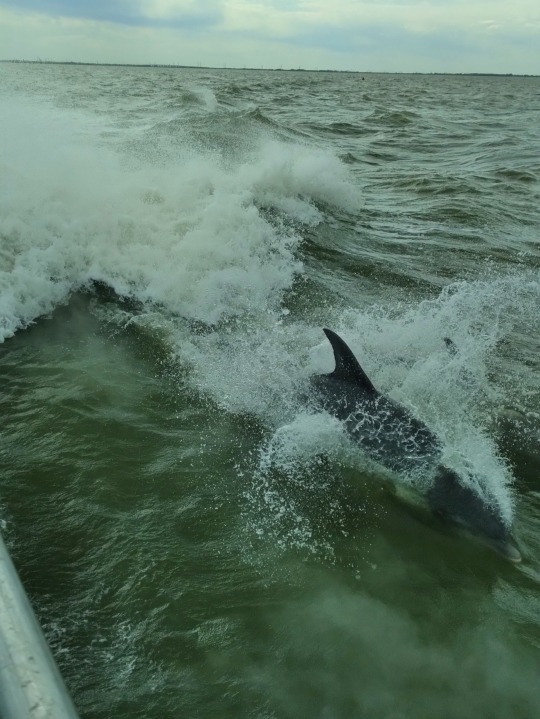
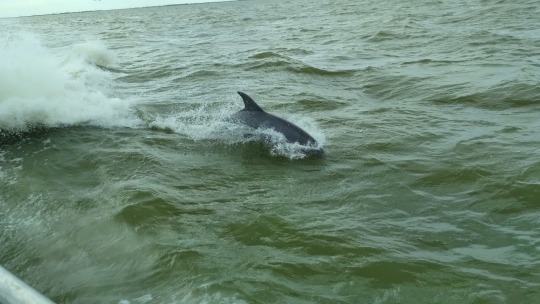

🐬 aquatic carnivorous ungulates!
#shebbz shoutz#shebbz irl#ocean#beach#dolphin#bottlenose dolphin#atlantic bottlenose#gulf of mexico#marine biology#beach life
188 notes
·
View notes
Link
The Opposition is accusing government of turning its back on the people of Newfoundland and Labrador following word that Marine Atlantic is once again raising its rates through a fuel surcharge that’s increased from 13 to 17 per cent.
#fuel#diesel#gas#kerosene#Marine Atlantic#surcharge#debate#House of Assembly#opposition#NL#Canada#news#via VOCM#world news
0 notes
Text

i felt compelled to draw a tuna. and then i felt compelled to add the notes that i remembered from my lecture yesterday. i hope this is vaguely accurate thumbsup emoji (i already edited this once because god forbid i confuse the dorsal fin with the fucking pectoral fin)
#eddie in the ocean#eddie learns the ocean#thunnus thynnus#atlantic bluefin tuna#fishblr#art#marine biology
75 notes
·
View notes
Text

Mayflower II on her sailing trials in the waters off Brixham, South Devon, April 1957 by Montague Dawson
#montague dawson#art#mayflower ii#mayflower#reproduction#sea#waves#sailing#england#britain#america#north america#new world#age of sail#american#english#british#history#ship#ships#voyage#atlantic ocean#devon#plymouth#alan villiers#age of exploration#age of discovery#adventure#brixham#marine art
69 notes
·
View notes